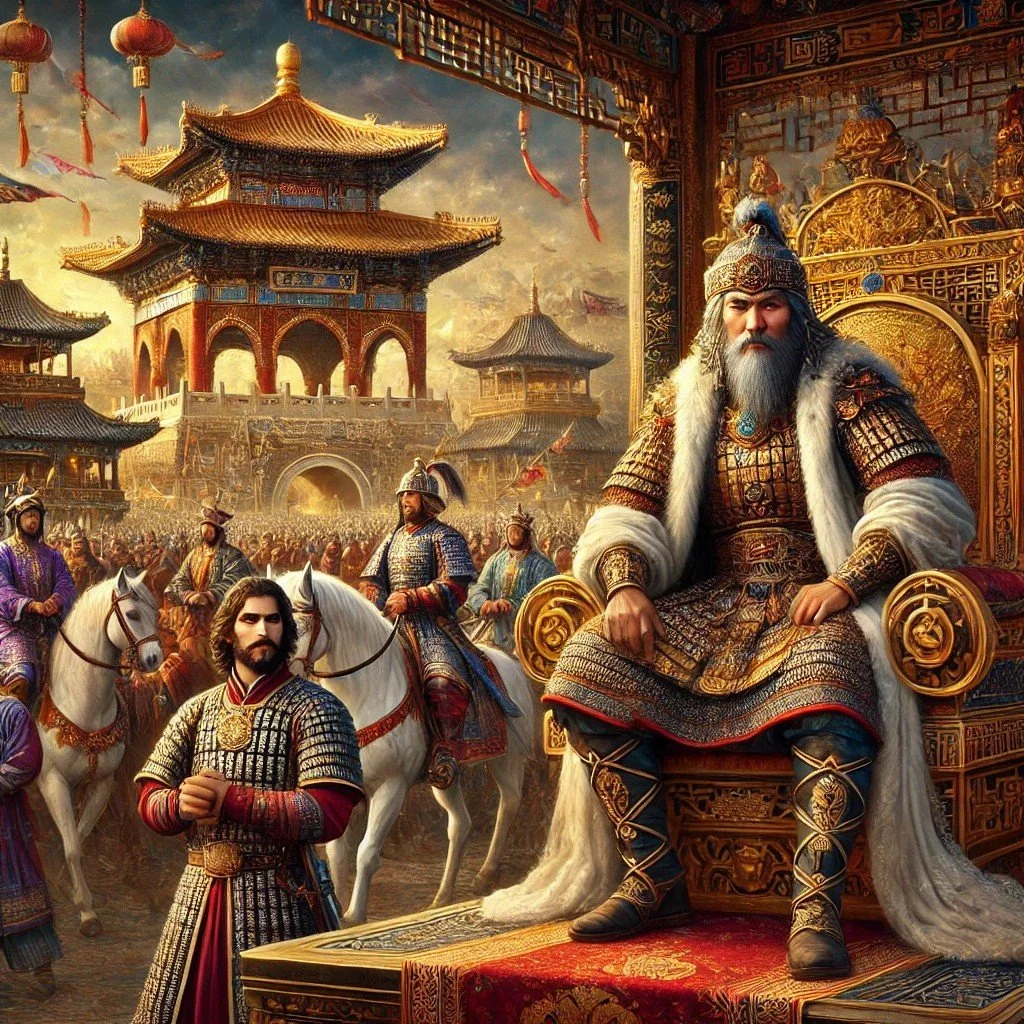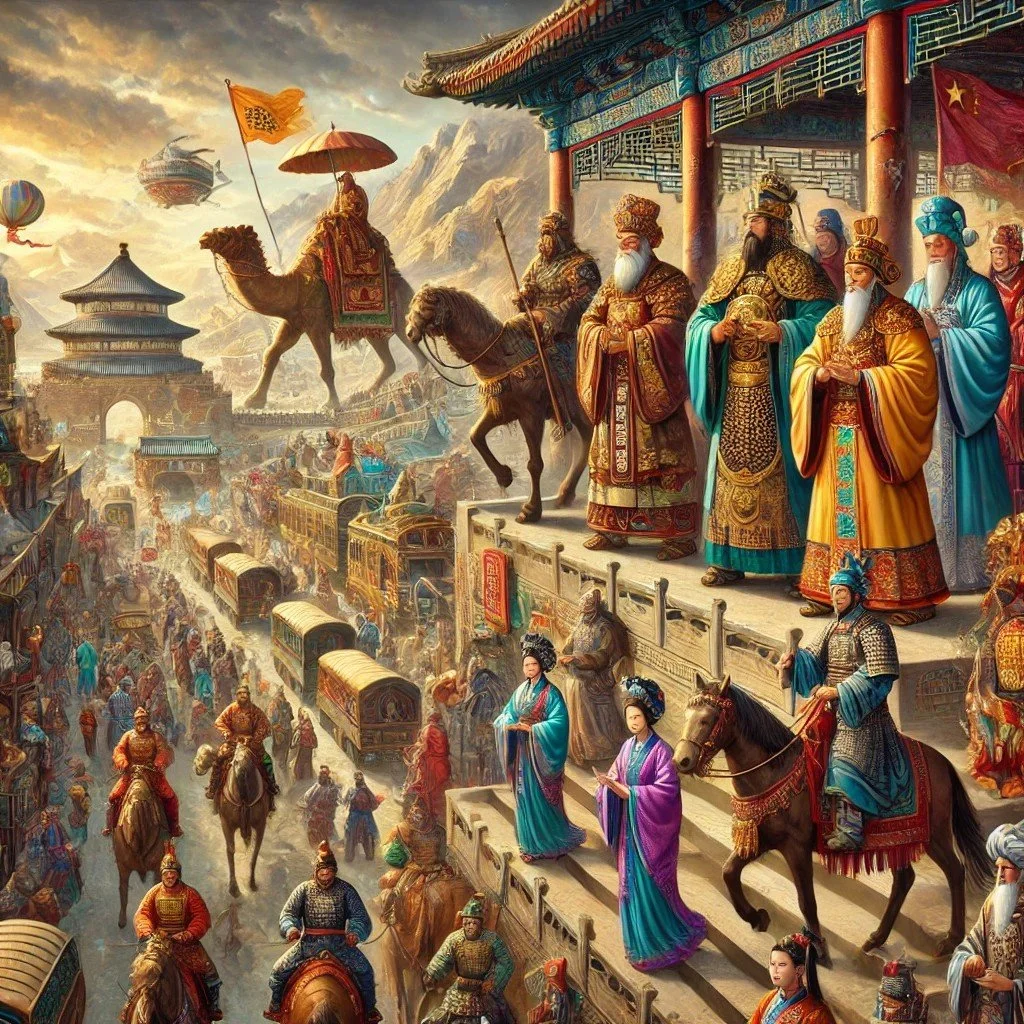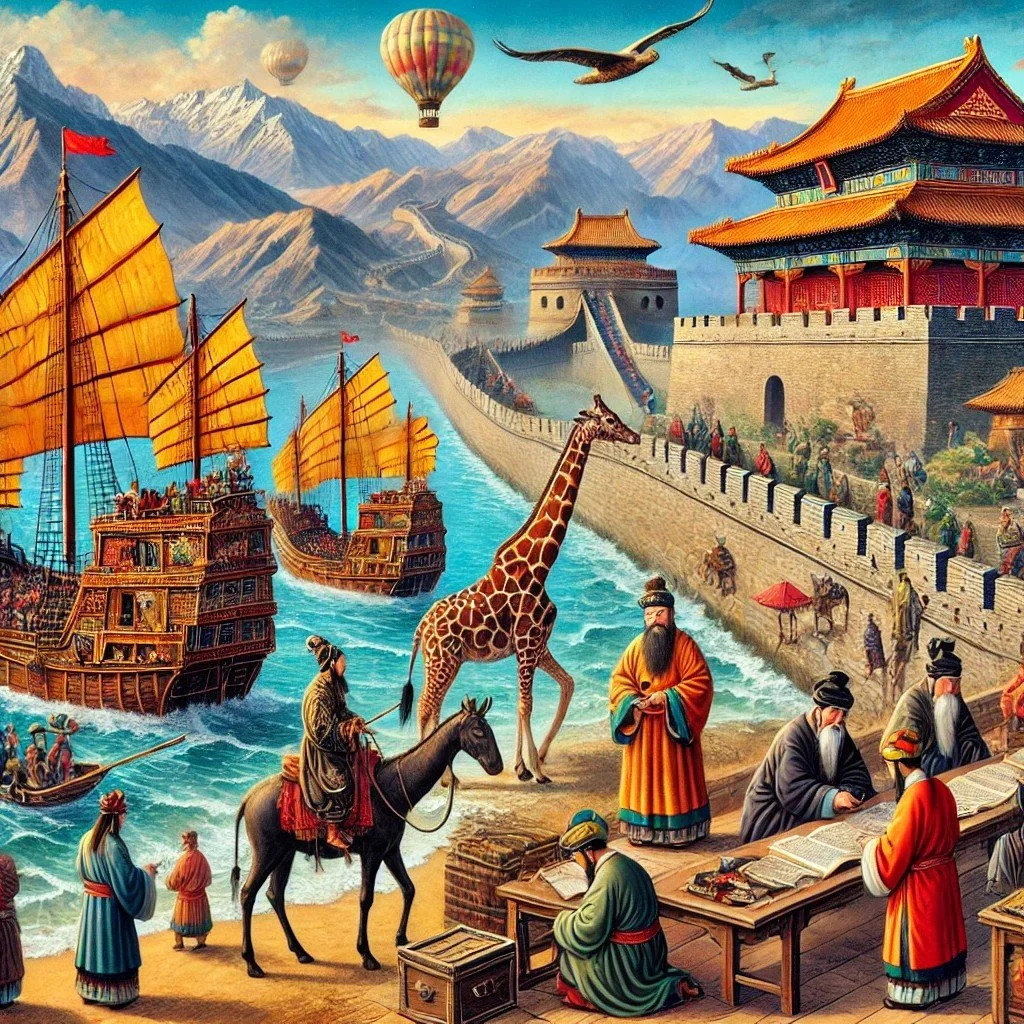Lesson 4: The Yuan and Ming Dynasties (Later Chinese Dynasties)
🏹 The Mongol Empire and Kublai Khan
The Mongols were fierce warriors from the north, led by Genghis Khan, who created a massive empire by conquering many lands. His grandson, Kublai Khan, became the ruler of China in 1279 and started the Yuan Dynasty. Kublai Khan wanted to be more than just a warrior — he wanted to rule China like a true emperor. He even gave himself a Chinese name and built a grand capital city, Khanbaliq, now known as Beijing.
One story tells of how Kublai Khan welcomed Marco Polo, a traveler from Venice. Marco Polo was amazed by the huge palace, sparkling with gold and silver, and the busy markets full of silk, spices, and precious stones. He later told Europe all about China’s wonders, making people curious about the Far East.
🏯 Life in Yuan China
Life in Yuan China was very different. The Mongols were in charge, and they divided society into four groups: Mongols at the top, followed by people from Central Asia, then northern Chinese, and finally southern Chinese. The Chinese were not allowed to have high government jobs — those went to Mongols and foreigners.
Despite this, China remained a land of trade and culture. The Silk Road was safer than ever because the Mongols protected the trade routes. Merchants could travel long distances, trading silk, porcelain, and tea with Europe and the Middle East. It was a time when Chinese ideas, like gunpowder and printing, spread far beyond China’s borders.
🔥 The End of the Yuan Dynasty
By the late 1300s, people in China were unhappy. Heavy taxes and floods made life hard, and many believed the Mongols had lost the Mandate of Heaven — the divine right to rule. In 1368, a former monk named Zhu Yuanzhang led a rebellion and pushed the Mongols out of China. He became the first emperor of the Ming Dynasty.
🌊 The Ming Dynasty
🚢 Great Sea Voyages
The Ming Dynasty (1368–1644) brought great change. One of the most exciting events was the sea voyages led by Zheng He. Imagine huge wooden ships — the largest in the world — sailing across the Indian Ocean. Zheng He visited places like India, Arabia, and even Africa, bringing back exotic animals like giraffes! These voyages showed the world China’s power and wealth.
🏗️ Great Building Projects
The Ming emperors also built incredible structures. They rebuilt and expanded the Great Wall of China to protect the empire from invaders. The wall stretched for thousands of miles over mountains and deserts. They also built the Forbidden City in Beijing, a vast palace complex where the emperor and his family lived. No one could enter without permission — it was a symbol of the emperor’s supreme power.
📜 Ming Government
The Ming emperors wanted to make sure they ruled wisely. They brought back the civil service exams, where men had to pass difficult tests on Confucian ideas to work in the government. This helped the emperor pick smart and loyal officials.
🌏 Relations with Other Countries
At first, the Ming traded with other countries through the sea voyages and the Silk Road. But later, they closed China’s borders, stopping most trade with the outside world. The emperors worried about foreign influences and wanted to protect Chinese traditions. As a result, China became more isolated.
The Yuan and Ming Dynasties were full of drama, from the Mongol conquests to the grand Ming voyages. Each dynasty shaped China in unique ways — the Yuan connected China to the world, while the Ming focused on strength and tradition.


